Exhibition
The Romanische Cafe
In the Berlin of the 1920s
In the Berlin of the 1920s
An Exhibition at the Original Location
Opening Hours:
in the Europa Center, Berlin-Charlottenburg
Open Fridays & Saturdays
from 1 pm to 6 pm
(closed Sundays–Thursdays)
Admission is free
THE EXHIBITION
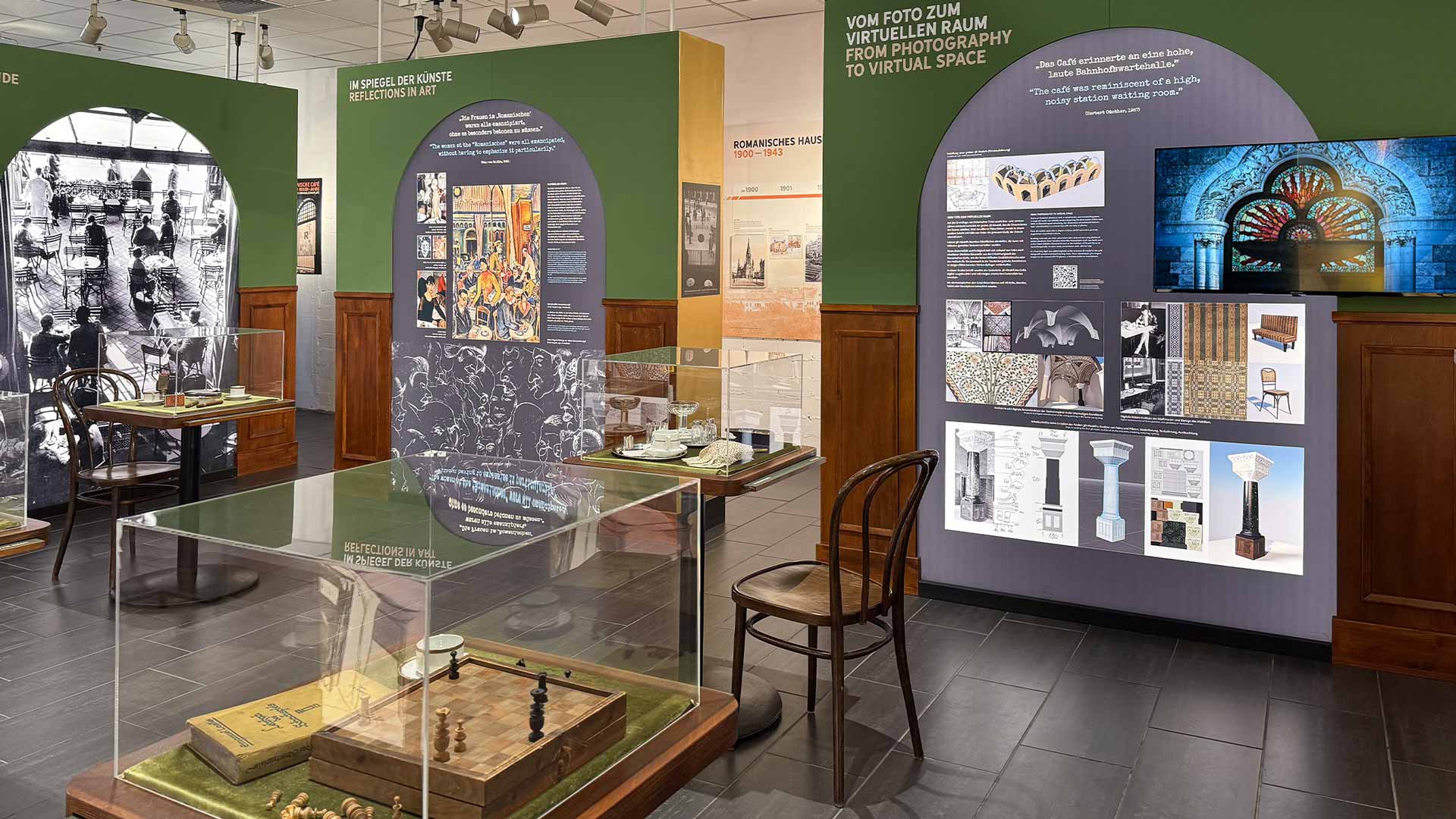
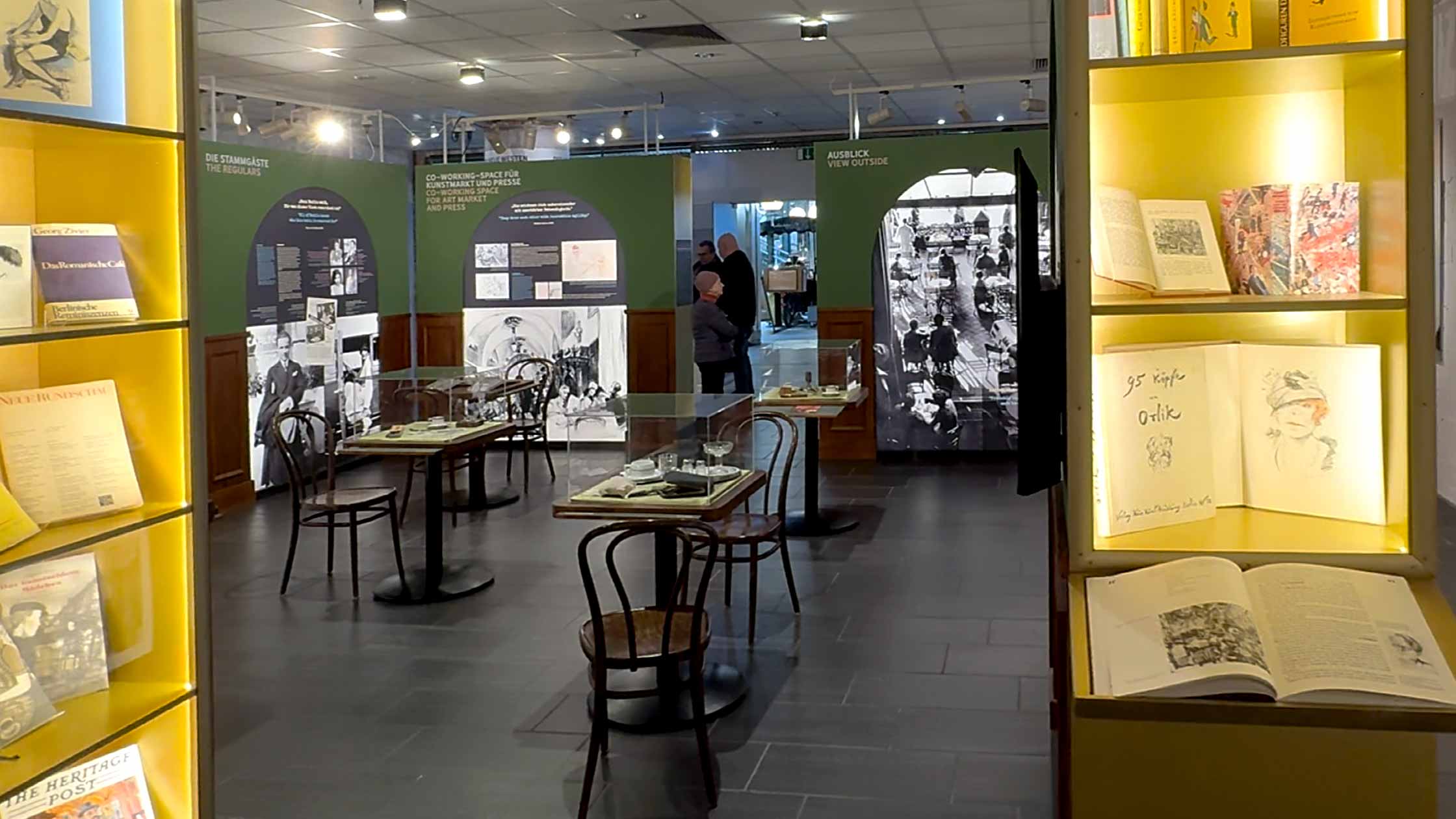
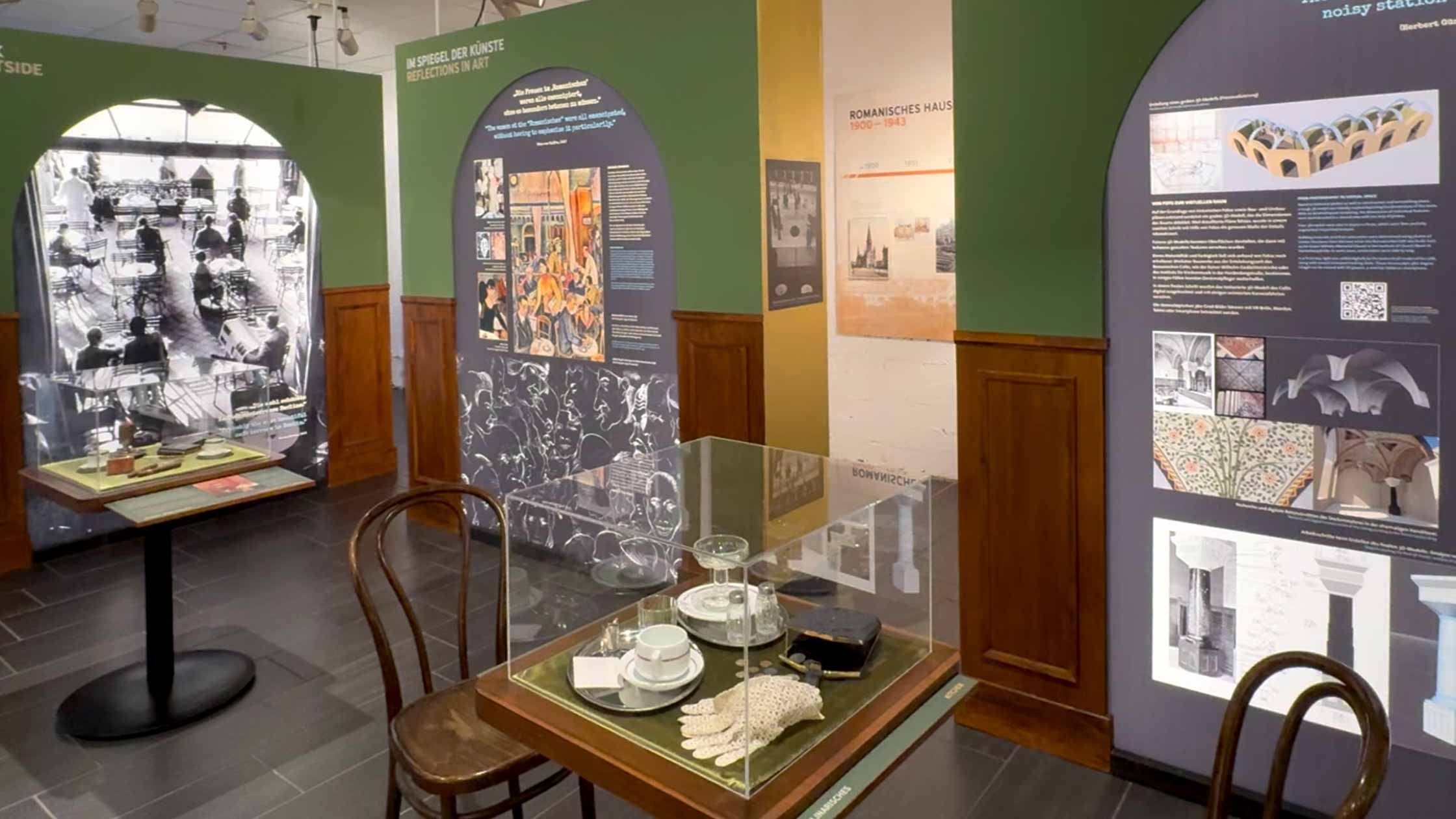
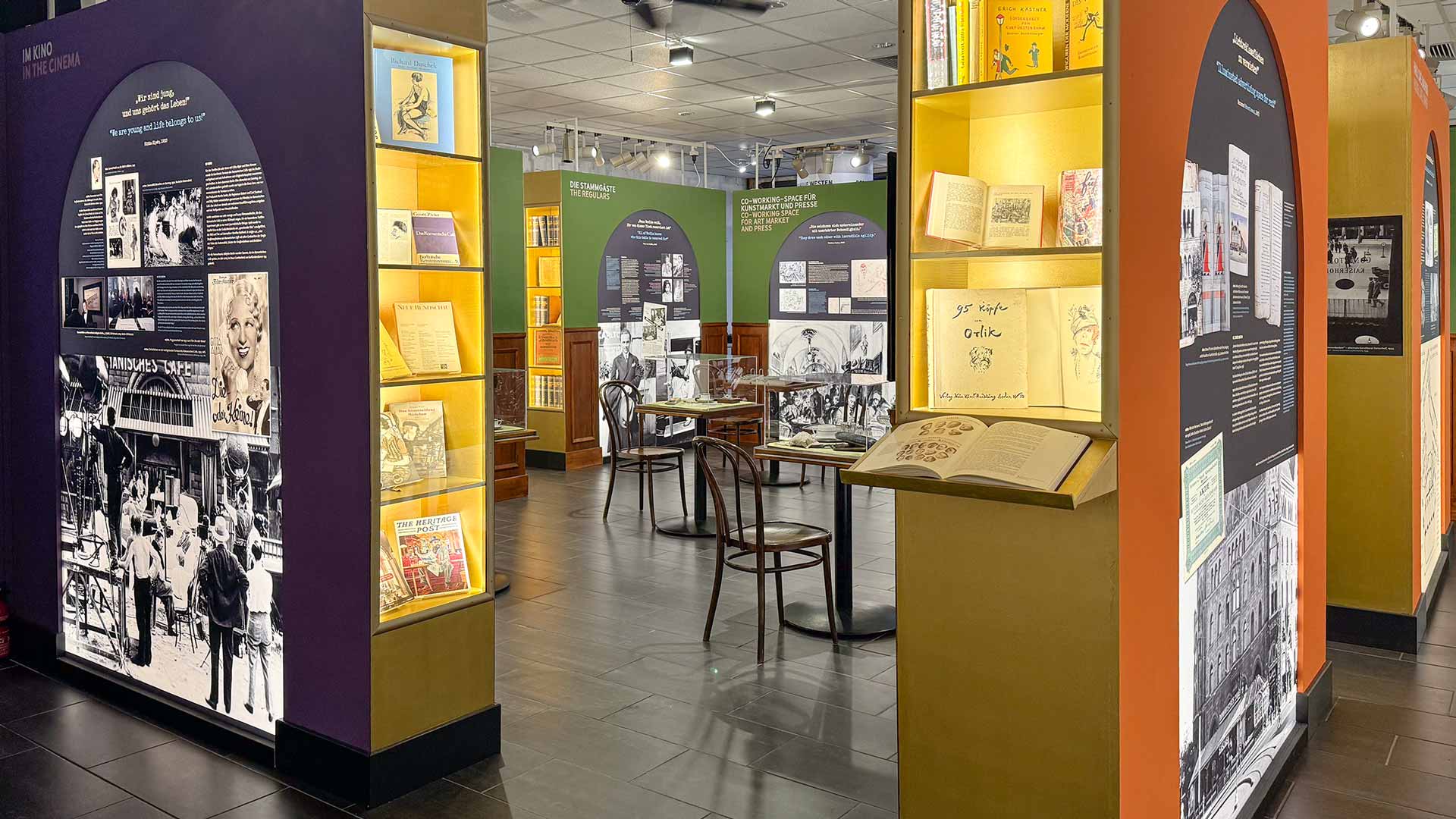
Located in the atrium of the Europa Center, the exhibition entices visitors with a window display featuring original 1920s fashion pieces, a moving ‘then and now’ image of the area around the Kaiser Wilhelm Memorial Church and dance-along video lesson in the Charleston. Beyond the entrance, an original café table with antique chairs await, where visitors can take a seat as if they were sitting on the terrace of the Romanisches Café.
The focal point of the exhibition is the ‚Romanische Café’, a veritable hot spot to the artists of the time, with its colourful clientele and inspiring atmosphere. Contemporary depictions of the café and its guests in art works as well as in journalism, literature and music, breathe life into the legend: the café was magnetic to the cultural avant-garde of the 1920s. Some of these exhibits are being presented to the public for the first time.
A timeline of the history of the Romanisches Haus II and the location of the café in its immediate surroundings (the New West) frame the central narrative of the exhibition. The Romanisches Café is depicted as a microcosm of its time and place. The area’s booming entertainment industry, including cinemas, theatres, cabarets and dance locales, mixed with luxury shopping and both Russian and Jewish cultural influence, is mirrored in the clientele of the ‘Romanisches’. The creatives at the café were inspired by their surroundings, and in turn, their energy radiated outward into the area.
The Romanische Café
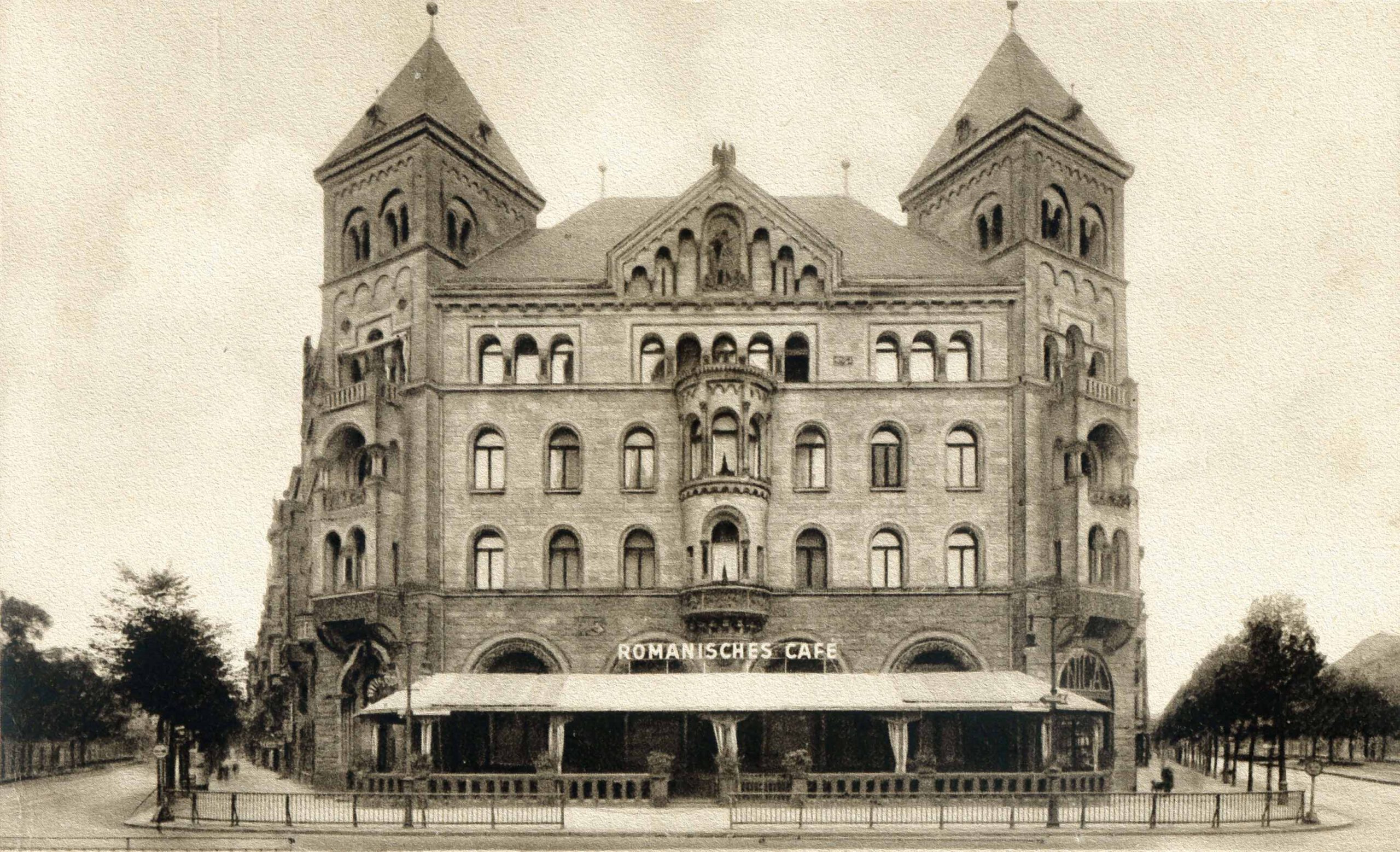
“Grass doesn’t grow
here, ideas do!”
here, ideas do!”
(Sigismund von Radecki, 1924)
Where the Europa Centre stands today, the artists and intellectuals of Berlin’s Weimar Republic used to gather. Until their expulsion by the National Socialist regime, the Romanisches Café was a place to debate about art projects, to network and to exchange ideas. It attracted creative minds from all over Europe to the up-and-coming new city borough around the Gedächtniskirche — the New West.
THE NEW WEST
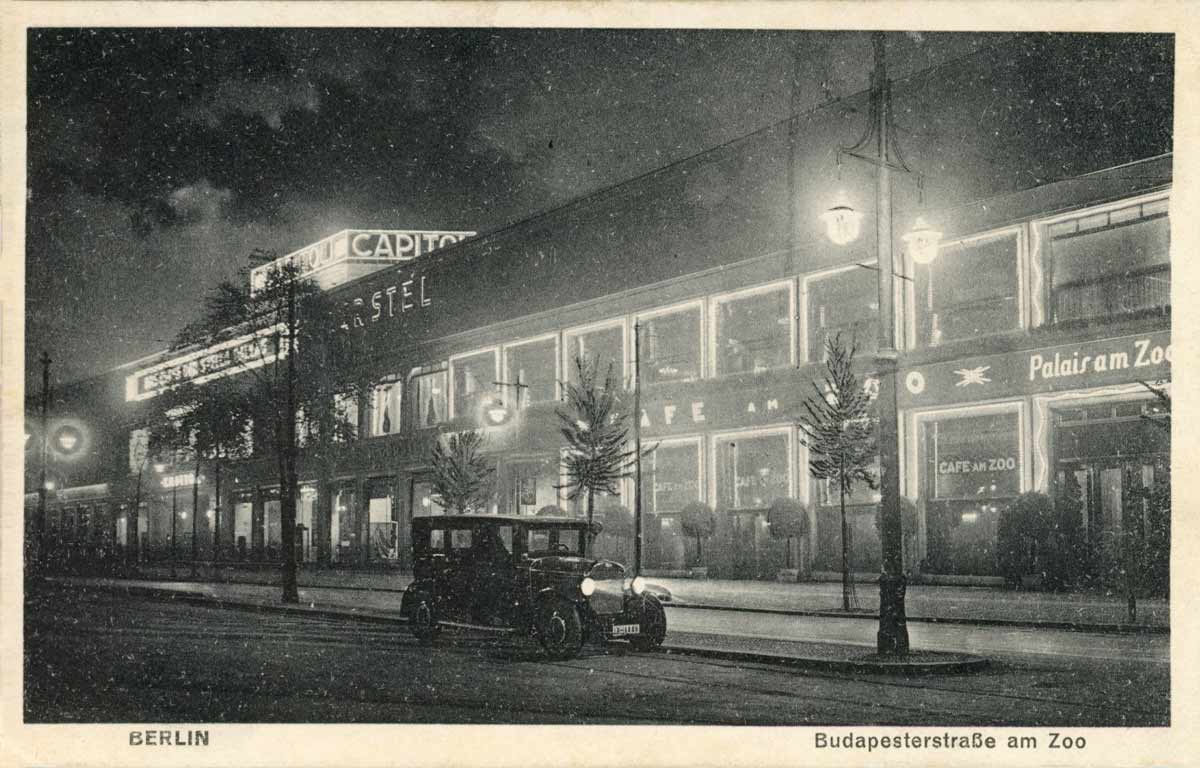
„Kurfürstendamm is the showcase of Berlin.“
(Curt Moreck, 1931)
In the 1920s, the Kurfürstendamm boulevard – the heart of the ‘New West’ – was of immense significance to the city, which had just been consolidated into Greater Berlin and boasted millions of inhabitants. Featuring countless commercial and entertainment establishments, the area attracted intellectuals, tourists as well as late-night revellers.
Stories of this time and place condensed around the Romanisches Cafe, which was like a second home to the cultural elite of the day.
REGULARS
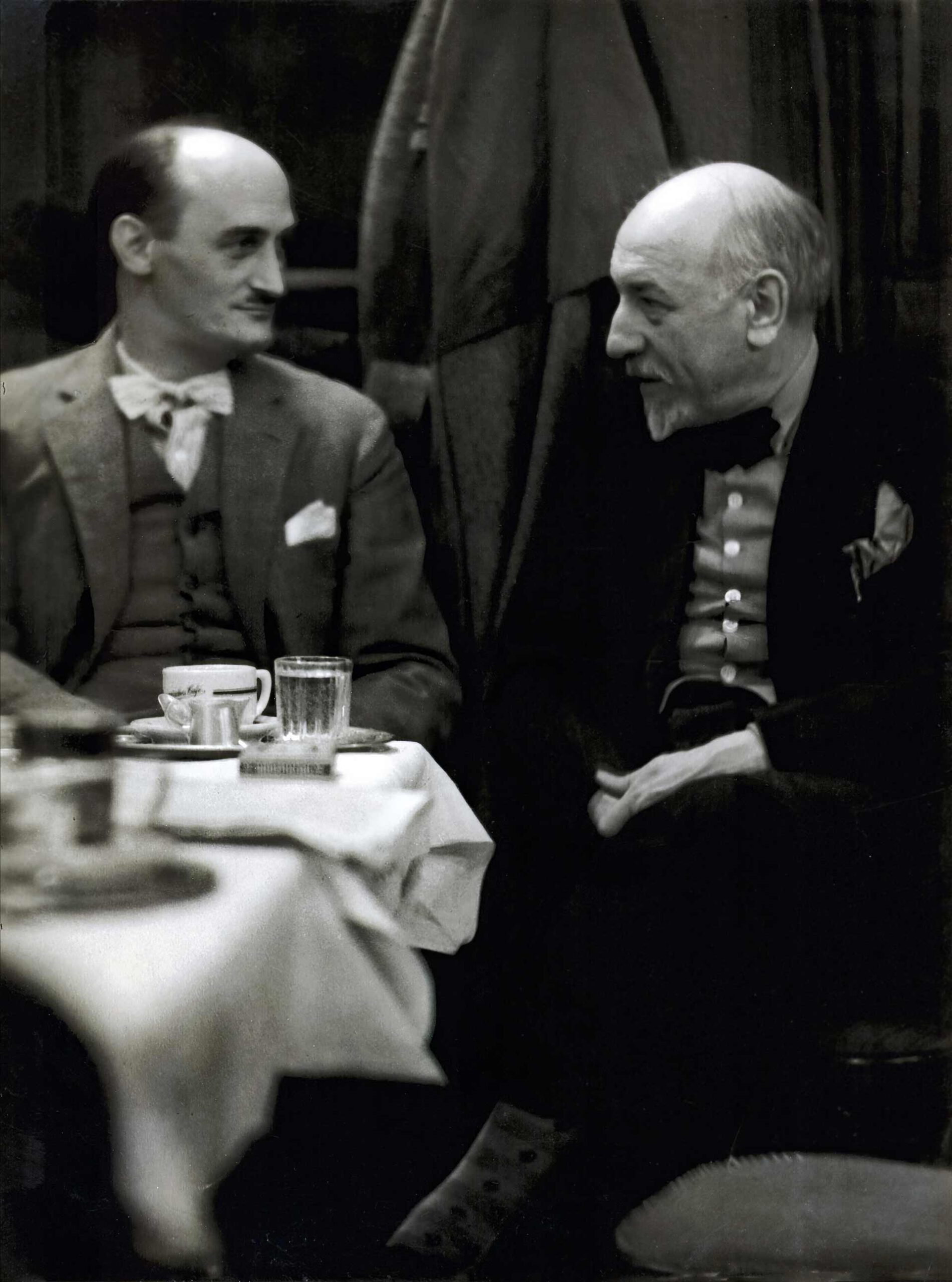
„All paths lead back to Berlin.
And into the Romanische.“
And into the Romanische.“
(Kurt Tucholsky)
Amongst the regulars at the Romanisches Cafe were: Max Liebermann, Alfred Döblin, Jeanne Mammen, Bertolt Brecht, Else Lasker-Schüler, Billy Wilder, Georg Grosz, Valeska Gert, Max Reinhardt, Alfred Flechtheim, Kurt Tucholsky, Friedrich Hollaender, Max Schmeling, Egon Erwin Kisch, Erich Kästner, Irmgard Keun, Mascha Kaléko and many more. This list of café visitors highlights the catastrophical end of the democratic Weimar Republic: after 1933, many of these patrons were banned from their professions, politically persecuted, went into exile, committed suicide or were murdered.
STRONG WOMEN
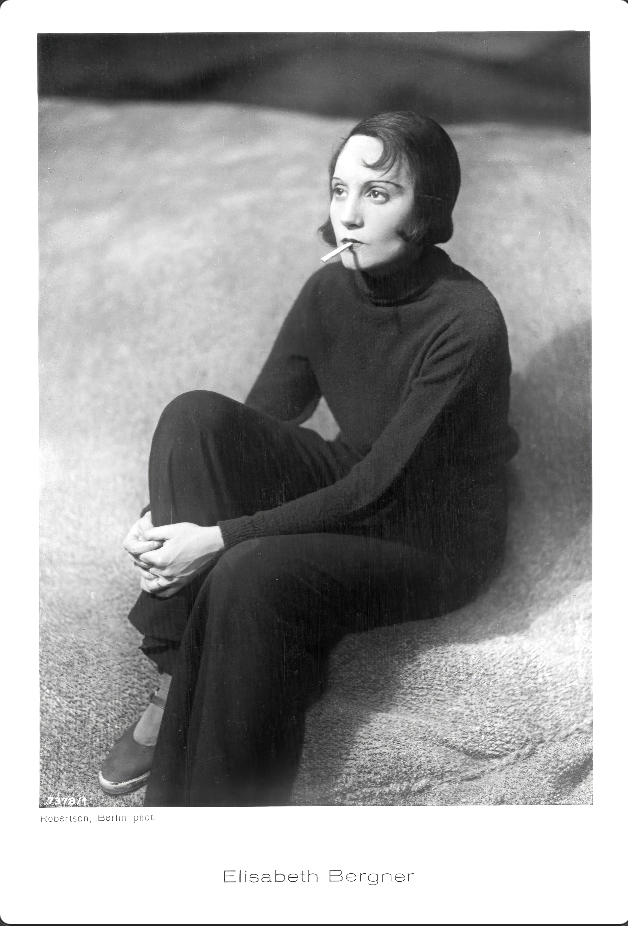
„The women in the ‘Romanische’
were all emancipated,
without needing to emphasise it.“
were all emancipated,
without needing to emphasise it.“
(Géza von Cziffra, 1981)
Women in particular took advantage of the freedom that the young democracy of the Weimar Republic offered the creative scene. They were accepted and expected patrons at the Romanische Café, where they exchanged ideas with women and men, leaving us many testimonies of their interactions. They helped to shape modern times and made an important contribution to gender equality for both their own and future generations.
THE LEGEND
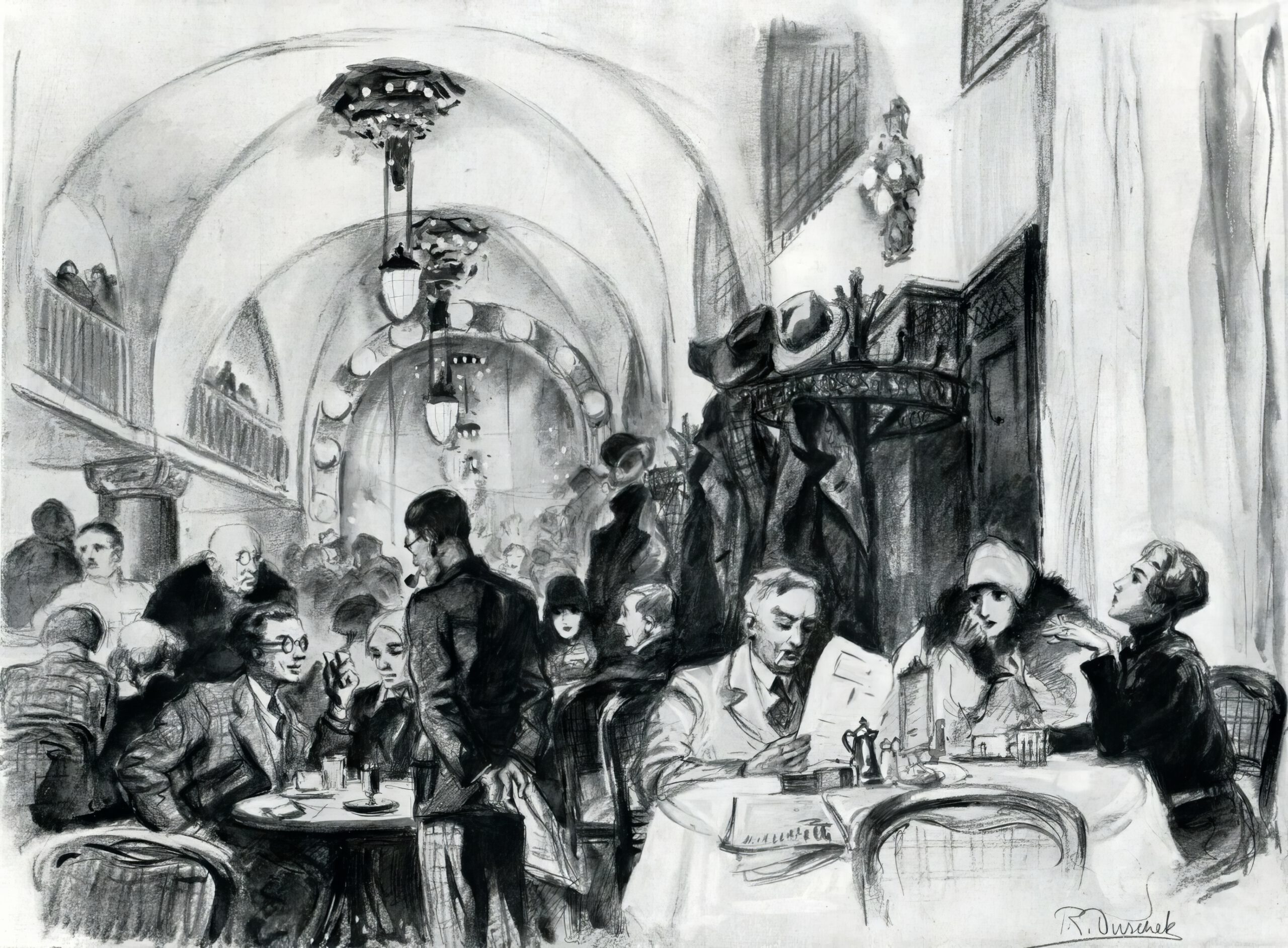
„It sounds like a lore
Of days long gone before…“
Of days long gone before…“
(Willi Kollo, 1964)
The Romanisches Café is a legend, yet also completely absent in the commemorative culture of Berlin. This exhibition seeks to bridge that gap, offering a space to experience, to learn and to remember. Located at the original site of the café, the memory of the cultural brilliance of New West Berlin in the Weimar Republic can be honoured and take root. The exhibition appeals to a broad local and international audience and creates low-threshold access to contemporary historical topics.
